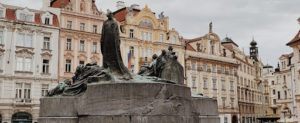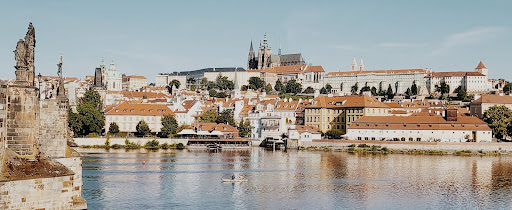Prague, the current capital of the Czech Republic, is one of the most historic cities in central Europe, but it’s constantly underrated compared to the glimmering metropolises of Vienna, Paris, and London. Little do many know that its historical significance and aesthetic atmosphere make it a hidden gem on the continent.
Here are a few reasons to add Prague to the travel list as the summer approaches.
The city has a few nicknames: “the city of a hundred spires”, or “the golden city”, but tourists tend to call Prague an “open-air museum.” This is largely because of the medieval buildings that still stand after centuries of conflict and change.
Through its timeline, a multitude of architectural styles were developed, each individually established by the rulers who had Prague under their dominion.
Such places like the Renaissance astronomical clock in Wenceslas Square, the Gothic St. Vitus Cathedral, and the Neoclassical National Theater, are all testaments to different periods of history within this enchanting city, contributing to the aesthetic that is seen today.
“I really enjoyed basically all of it. I would recommend going there, and definitely check out a bunch of cool historic places, like the astronomical tower,” said Vincent Cruz, Leesville Road High School alum who visited Prague in 2022.
Like Paris and London, Prague is split by a river, the Vltava, and is connected through several medieval bridges, the most famous being the Charle Bridge which is lined with Czech saints and allegorical figures. It overlooks the Hradčany neighborhood which displays the silhouette of Prague castle, the largest castle complex still in use today. The view can be especially mesmerizing when the sunset hits the spires of the adjacent Cathedral.

Along the Vltava sits cafes, small shops, and unique restaurants where it’s common to see locals sitting under swaying moss trees, sharing the shade with a mass of visiting swans.
In the interior of the city, it is more crowded, but there are also local restaurants, art-nouveau cafes, and an abundance of souvenir shops.
“I really loved Prague Castle (it was very grand), St. Vitus Cathedral (the stained glass was so impressive), and the New Town District (very modern, lots of cool shops and restaurants). Prague was honestly my favorite city I visited because of how much history the city has,” said Anjali Kalanidhi, Senior, over text.
The best part is that it isn’t that expensive. The Czech Republic, due its Soviet historic route, is a cheaper country to visit.
There are many attractions to see in the city, and a lot of them revolve primarily around music. Many of the musicians such as Mozart and Beethoven who originally started their careers in Austria, also have a deep history in Prague. With the establishment of the beautiful Municipal House, National Theatre, and Estates-General, there are many locations where you can witness musical performances.
Art is similarly in abundance as the National Gallery of Prague isn’t condensed into one national museum but instead is spread through various locations in the city, each with its own period of artwork. The Schwarzenberg Palace and Lobkowicz Collections are highly sought after locations in this field.
Overall, Prague might not be as well known as Paris or London, but equally contributes with its own unique cultural significance. Throughout history, it has stood the testament to time and continues to do so in enhancing the public.

Leave a Reply